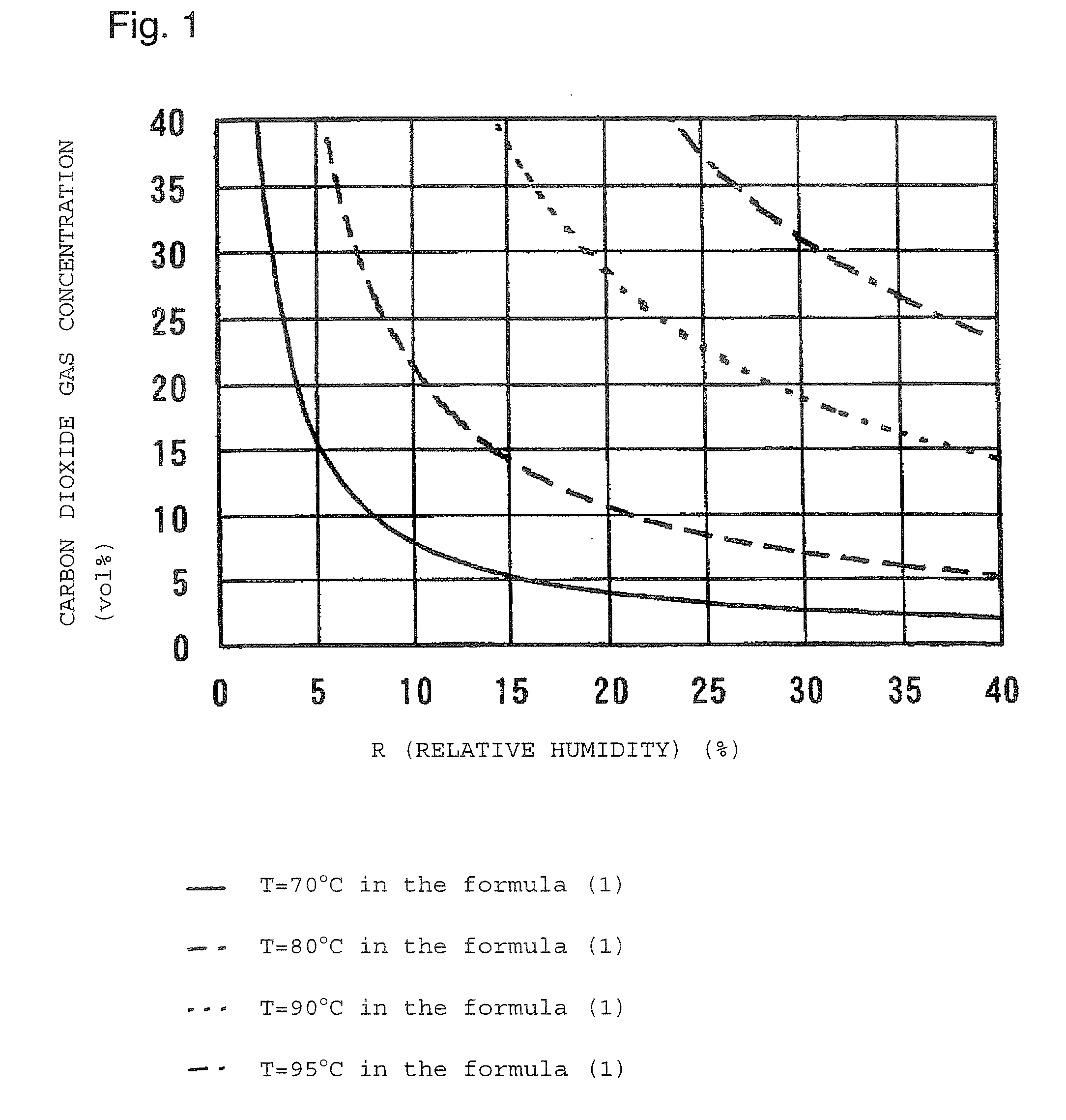Process for producing sodium hydrogencarbonate crystal particles having low caking property
a sodium hydrogencarbonate and crystal particle technology, applied in the direction of lithium compounds, rubidium/caesium/francium compounds, alkali metal carbonates, etc., can solve the problems of affecting the flowability of the particles, and affecting the commercial value of sodium hydrogencarbonate, etc., to achieve low caking property, prevent caking over a long period of time, and long treatment time
- Summary
- Abstract
- Description
- Claims
- Application Information
AI Technical Summary
Benefits of technology
Problems solved by technology
Method used
Image
Examples
example 1
[0045] Sodium hydrogencarbonate crystal particles (hereinafter sometimes referred to simply as products) having various surface compositions were produced, and a test for evaluating the caking property of them was carried out. In Table 3, No. 1, No. 6 and No. 7 correspond to Comparative Examples, and Nos. 2 to 5 and No. 8 correspond to Examples of the present invention.
[0046] 20 m3 of an aqueous sodium hydroxide solution having a concentration of 20 mass % was put in a tank (50 m3) provided with a stirrer, and the temperature was raised to 80° C. In such a state, a 100 vol % carbon dioxide gas was blown for 5 hours in a flow rate of 10 m3 per minute in a standard state for reaction crystallization. In the crystallization step, first, sodium hydroxide is reacted with carbon dioxide to form sodium carbonate. So far, no crystals are precipitated. Then, carbon dioxide and sodium carbonate are reacted to form sodium hydrogencarbonate. Here, as the solubility of sodium hydrogencarbonate ...
example 2
[0064] The packaging bag made of an LLDPE film of 120 μm used in Example 1 had a water vapor transmission rate of 6.0 g / (m2·24 h) at 40° C. with a relative humidity difference of 90% as stipulated in JIS K 7129. Instead, a packaging bag having alumina vapor-deposited thereon was used and the caking property evaluation test was carried out. This packaging bag is made of a sheet having a structure obtained in such a manner that a 12 μm PET film having an alumina transparent vapor deposition applied by the PVD method is used for moisture-proofing for the outermost layer so that the vapor deposition layer faces inside, a 15 μm ON film is used for the interlayer, and for the innermost layer, a 70 μm completely additive-free LLDPE film is used, and they are laminated by dry lamination.
[0065] The vapor transmission of the packaging bag was 0.2 g / (m2·24 h) at 40° C. with a relative humidity difference of 90° C. as stipulated in JIS K 7129. As the sample for caking property evaluation test,...
PUM
 Login to View More
Login to View More Abstract
Description
Claims
Application Information
 Login to View More
Login to View More - R&D
- Intellectual Property
- Life Sciences
- Materials
- Tech Scout
- Unparalleled Data Quality
- Higher Quality Content
- 60% Fewer Hallucinations
Browse by: Latest US Patents, China's latest patents, Technical Efficacy Thesaurus, Application Domain, Technology Topic, Popular Technical Reports.
© 2025 PatSnap. All rights reserved.Legal|Privacy policy|Modern Slavery Act Transparency Statement|Sitemap|About US| Contact US: help@patsnap.com

